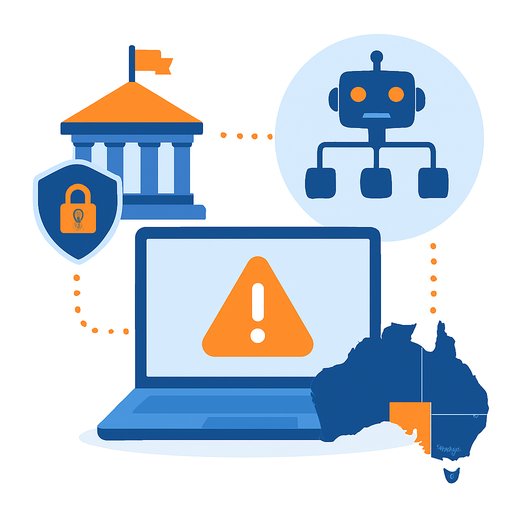Help for UK businesses to fill the £400bn AI skills gap
From: Skills England
Published: 29 October 2025
AI is changing how work gets done. Yet many employers don't know what skills their teams actually need, or where to start. Skills England has published a practical response: three tools to make adoption simpler, safer, and more productive.
Alongside this, a new government-industry partnership expects 7.5 million UK workers to gain essential AI skills by 2030 through training provided by major tech firms. This is an opportunity to raise productivity and wages across the economy-if we move with intent.
What's new
- AI Skills Framework: Defines technical, responsible, and non-technical skills for different roles and seniority levels.
- AI Skills Adoption Pathway: A staged model showing how organisations progress from awareness to scaled use.
- Employer AI Adoption Checklist: Structured prompts to assess readiness, spot gaps, and upskill teams-covering tools such as conversational assistants, image generation, and document analysis.
Why this matters for government and public bodies
AI could add up to £400bn to the UK economy by 2030 through better innovation and productivity. Public services stand to benefit too-faster case handling, improved triage, better analytics-if the right skills, safeguards, and procurement choices are in place.
For central departments, local authorities, NHS bodies, regulators, ALBs, and combined authorities, these tools offer a common language and a clear route to responsible adoption.
Sector snapshots: where skills are missing
- Construction: Opportunities include drone-assisted surveying and AR safety simulations. Progress is held back by basic digital literacy gaps.
- Creative Industries: Widespread use for content and digital storytelling, but training is patchy-raising concerns about quality control and originality.
- Advanced Manufacturing: Automation, predictive maintenance, and robotics are established, but the AI skills gap is widening as the workforce ages.
The AI Skills Framework at a glance
- Technical: Data literacy, prompt and query writing, workflow automation, model evaluation, analytics, and integration basics.
- Responsible use: Bias and fairness, auditability, risk assessment, DPIAs, data protection, security, copyrighted content handling, and transparent reporting.
- Non-technical: Change management, procurement and vendor assessment, legal and policy alignment, frontline adoption, and measurement of outcomes.
Adoption Pathway: stages and actions
- 1) Awareness: Run short briefings for leaders and unions. Clarify what AI can and cannot do. Identify high-friction processes.
- 2) Pilots: Test low-risk use cases (summarisation, search, internal knowledge assistants). Set data controls and terms with vendors.
- 3) Standards and safeguards: Approve a responsible AI policy, DPIA templates, logging, human-in-the-loop checks, and incident reporting.
- 4) Scaling: Create shared services (secure prompts, approved tools, model access), role-based training, and procurement frameworks.
- 5) Continuous improvement: Track benefits (time saved, error rates, service quality), refresh training, and retire low-value pilots.
Employer AI Adoption Checklist: ask these first
- Which tasks are repetitive, text-heavy, or data-heavy-and measurable?
- What data will the tool see? How is it protected? Are DPIAs complete?
- Which roles need which skills (user, builder, reviewer, approver)?
- What's the training plan for technical, responsible, and non-technical skills?
- Are procurement terms clear on data use, IP, security, and exit?
- What counts as success (KPIs, SLAs, quality thresholds)? Who audits?
- How will you engage staff, contractors, and unions? What support is in place?
What government can do now
- Set ownership: Name an SRO for AI skills and adoption. Form a small, cross-functional steering group (policy, digital, data, legal, HR, security).
- Map roles to skills: Use the framework to define baselines by role. Start with managers, caseworkers, analysts, and call-centre teams.
- Start safe pilots: Choose 2-3 use cases with clear metrics and limited data sensitivity. Publish a one-page pilot charter.
- Bake in safeguards: Require human review for outputs that affect eligibility, enforcement, or payments. Log decisions and exceptions.
- Use common tooling: Provide an approved workspace and model access with central controls and audit.
- Measure benefits: Report time saved, quality improvements, and user satisfaction. Reinvest gains into frontline services.
- Support SMEs: Share templates, run short clinics, and point supply-chain partners to free training from industry programmes.
Inclusion first
The biggest blocker isn't always AI-it's basics. Many people still lack devices, connectivity, or confidence with passwords and account security. Any AI plan should include digital inclusion, entry-level training, and practical support.
For community partners and teams working on digital inclusion, see the work of the Good Things Foundation for context and partnerships here.
Working with industry
Major technology companies-including NVIDIA, Google, IBM, and Microsoft-are making training materials available free of charge over the next five years. Skills England will use findings from the new report to help shape what learners need most.
For teams planning role-based development, you can scan AI training by job category to spot quick wins and gaps here.
Governance and assurance
- Keep humans in the loop for decisions that carry legal, financial, or safety impacts.
- Document prompts, datasets, and model settings for audit.
- Run DPIAs and security reviews before pilots scale; refresh them after significant changes.
- Set a clear route to pause or roll back tools if risks emerge.
Recommended reading
- Understanding AI ethics and safety from The Alan Turing Institute read more
Key takeaway
The path is clear: define skills by role, pilot with guardrails, measure outcomes, and scale what works. With these tools, public bodies and businesses can move from uncertainty to practical delivery-responsibly and at pace that fits their context.
Your membership also unlocks:






